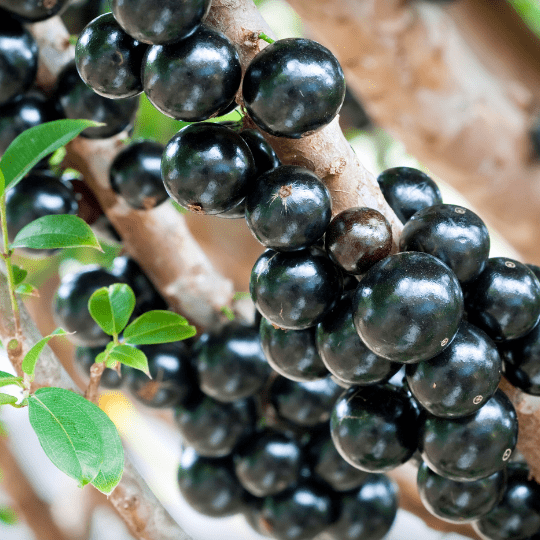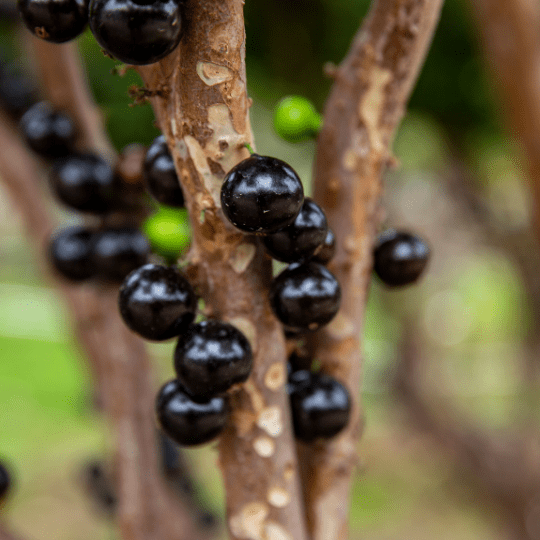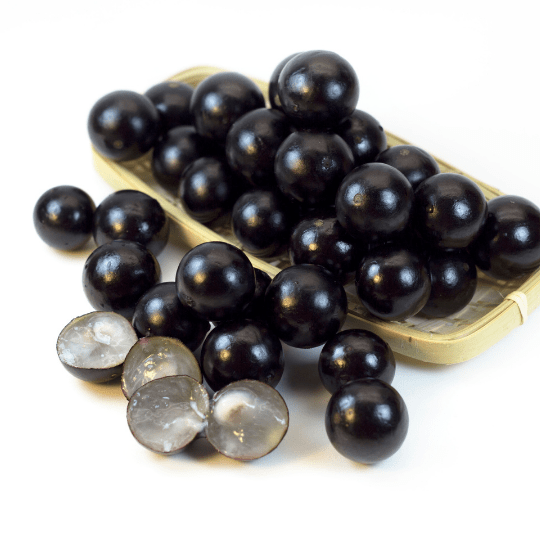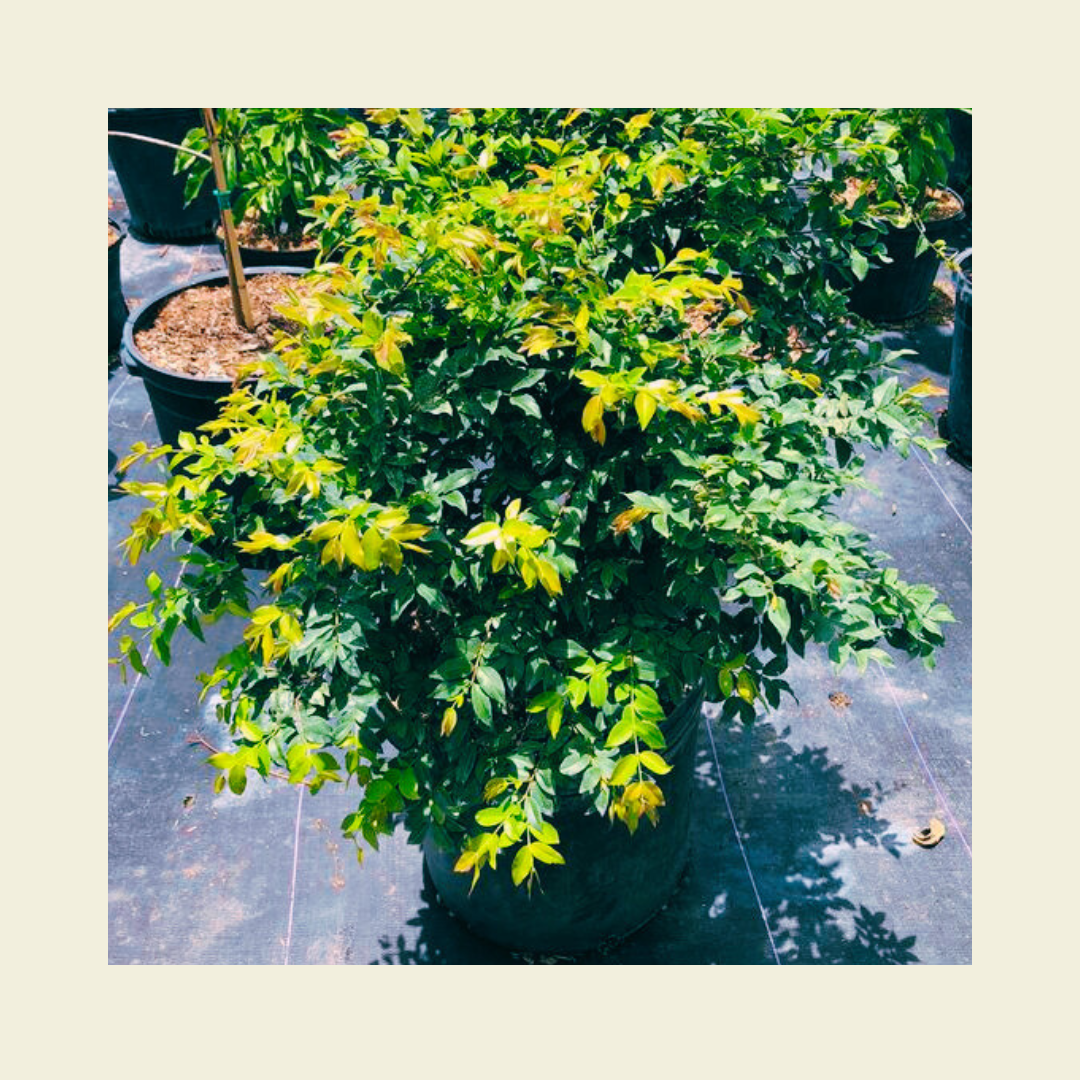Jabuticaba Plant (Plinia cauliflora)
Jabuticaba Plant (Plinia cauliflora)
Sign up to get notified when this product is back in stock
Couldn't load pickup availability
Also known as Jaboticaba or Brazilian grapetree.
The Jabuticaba plant is a fascinating and visually striking tropical fruit tree native to Brazil. Its unique feature lies in its growth pattern, as it bears fruits directly on its trunk and branches, creating a mesmerizing sight. With its dense, dark green foliage and smooth, grayish bark, the Jabuticaba is an aesthetic marvel in any garden.
The fruit itself is a true delight for the senses. Encased in a dark purple, thin, and slightly tannic skin, the Jabuticaba fruit resembles a small grape in size and shape. Once you take a bite, the burst of flavor is nothing short of enchanting. With a perfect balance between sweetness and tartness, the juicy flesh delivers notes of grape, lychee, and even a hint of rosewater. The fruit is best enjoyed fresh, straight from the tree, or can be used in a variety of culinary creations such as jams, jellies, wines, and cocktails. Its unique appearance and delectable taste make the Jabuticaba a truly remarkable and sought-after fruit.
Plant Care
Prefers full sun or part shade. Keep in a rich, well-drained, slightly acidic, moist soil, and humid conditions as much as possible. Jaboticaba have shallow roots and are great for container growing. Water frequently.
- Propagation Method: Grown from seed. The smaller Jabuticaba (1-2 ft.) will produce fruit in 4-8 years with proper care. While the larger one (3-4 ft) is older and will produce produce in 3-4 years, with proper care.
- Fertility: Self-fertilizes.
- Temperature Tolerance: Ideal Minimum: 15 C. Minimum Tolerated (briefly): 10 C
Shipping
Please note that all plants are trimmed/pruned for shipping. Roots are wrapped and kept moist with a substrate mix that can be shaken off for planting.
**Please note that you will need a container and potting soil to pot your plants upon arrival.**
Shipping & FAQs
Shipping & FAQs
Fertilizer & Pest Control
Fertilizer & Pest Control
The MARPHYL Organic Liquid Fertilizer or M.M Basics 20-20-20 Fertilizer are great options for your plants! For more details, check out our Fertilizer Guide.
Pest Control is just as important as proper watering, sun, and fertilization. For most common pests, the Lost Coast Therapy (US/CA) is a great option. If you're battling fungus gnats specifically, go with Mosquito Dunks. It is highly effective and very easy to use.
For more details, check out our Guide to eliminate common plant pests.
Grow Lights & Other Tools
Grow Lights & Other Tools
The Barrina Grow Lights are an excellent option to ensure your plants receive sufficient light indoors.
Keeping stable humidity levels around your plants is key to healthy plants! The VIVOSUN is perfect for plant parents. For more options, check out the Top 6 Best Humidifiers for Plants - in Canada.
Need help with your plants?
Need help with your plants?
Sometimes everything looks fine, but something still feels off — a plant keeps dropping leaves, or you're unsure if your setup is correct.
✨ A quick adjustment now can save a plant that would take months to recover in spring.
Book a 15-minute Virtual Session with our expert plant consultant - Cristina.
Here’s what you get:
✅ 15-Minute Personalized Video Call: We’ll connect over Google Meet so you can show me your plant in real time.
✅ Customized Care Plan: After the call, you’ll receive a clear and easy-to-follow care plan tailored to your plant’s needs.
✅ 1 Free Follow-Up by Email: Have a quick question after your consultation? You can email me once within 7 days for clarification or updates at no extra cost.
✅ Satisfaction Guaranteed: If you’re not happy with your consultation, you’ll receive a full money-back refund.
Share
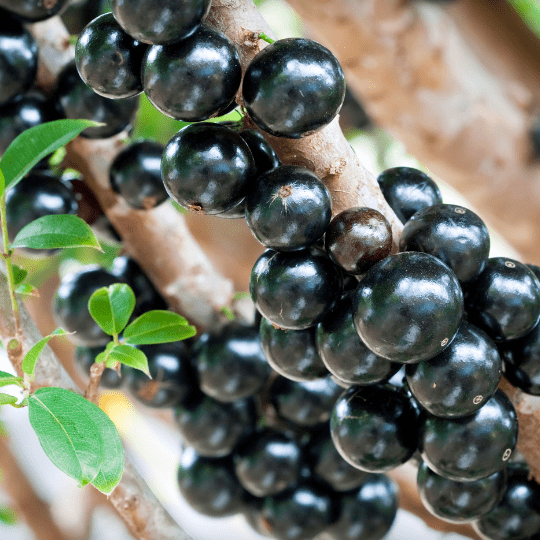
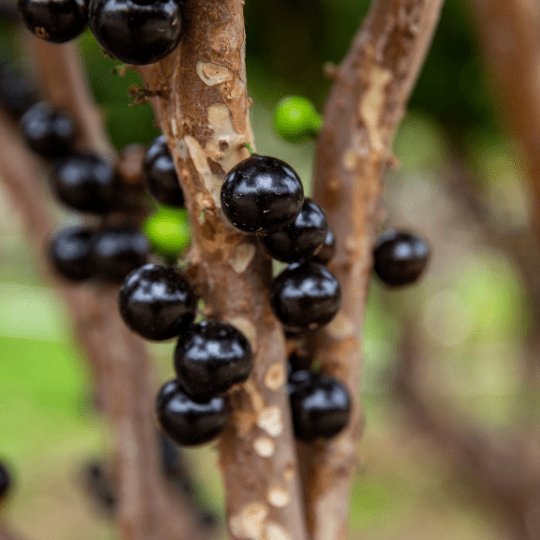
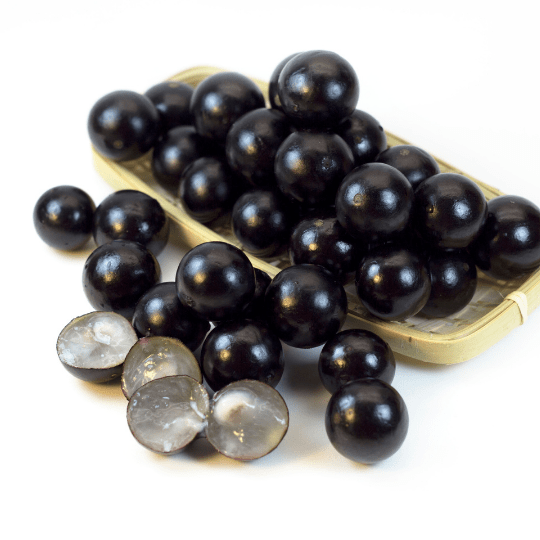
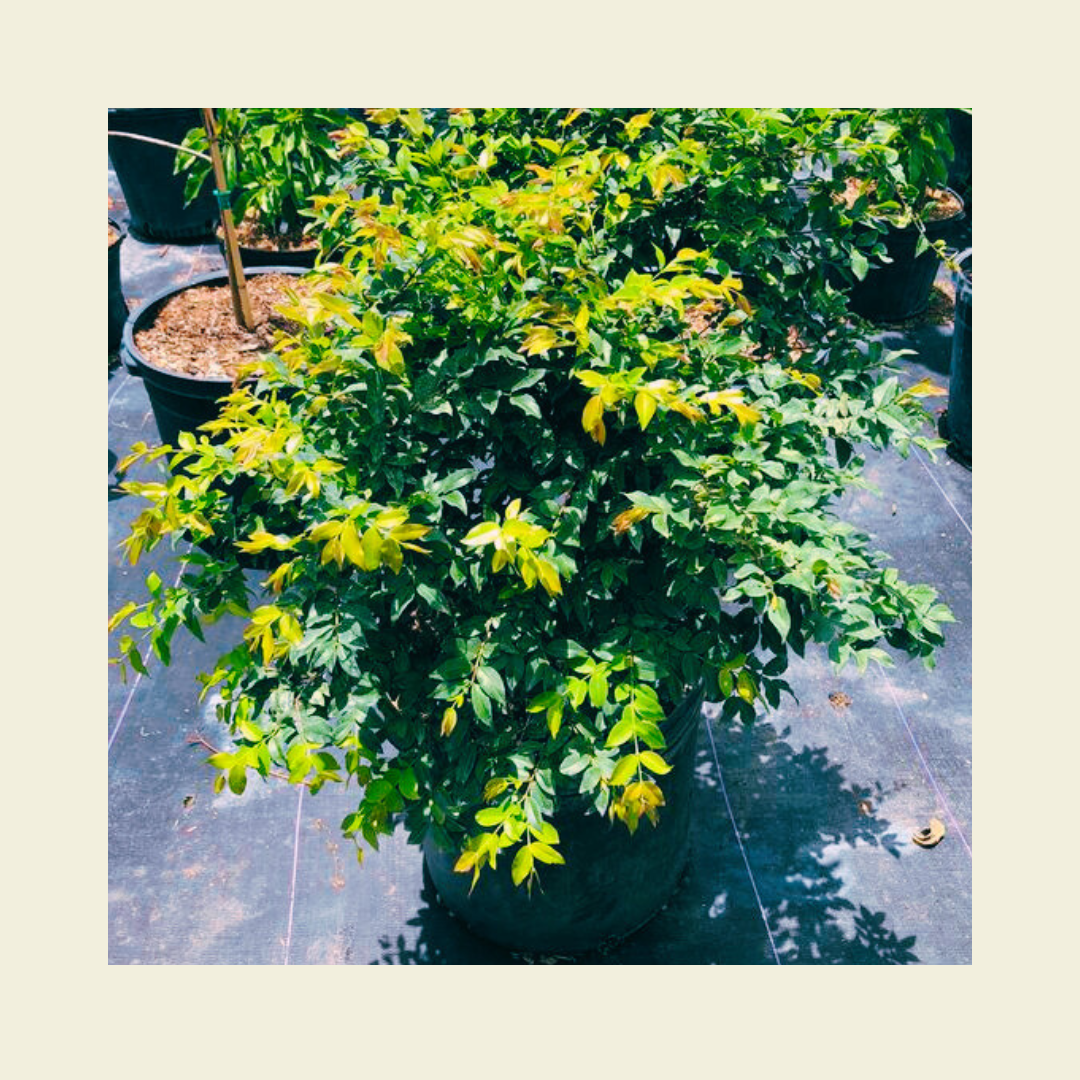
Learn more...
-

Cold Damage on Plants: How to Identify, Treat, ...
Cold damage on plants can show up quickly and spread fast, especially with winter temperature drops, drafts, or unexpected cold snaps. Here’s how to identify the early signs, save affected...
Cold Damage on Plants: How to Identify, Treat, ...
Cold damage on plants can show up quickly and spread fast, especially with winter temperature drops, drafts, or unexpected cold snaps. Here’s how to identify the early signs, save affected...
-

8 Best Plants for Bedrooms and Better Sleep
The best plants for your bedroom are the ones that make the space feel like a retreat. Whether you want plants that purify the air, boost humidity, or simply help...
8 Best Plants for Bedrooms and Better Sleep
The best plants for your bedroom are the ones that make the space feel like a retreat. Whether you want plants that purify the air, boost humidity, or simply help...
-

Do Pothos Plants Need Good Drainage Soil or Pot?
Even though pothos plants can surprisingly grow in plain water, they still struggle in soggy soil without good drainage — and there’s a big reason why.
Do Pothos Plants Need Good Drainage Soil or Pot?
Even though pothos plants can surprisingly grow in plain water, they still struggle in soggy soil without good drainage — and there’s a big reason why.

